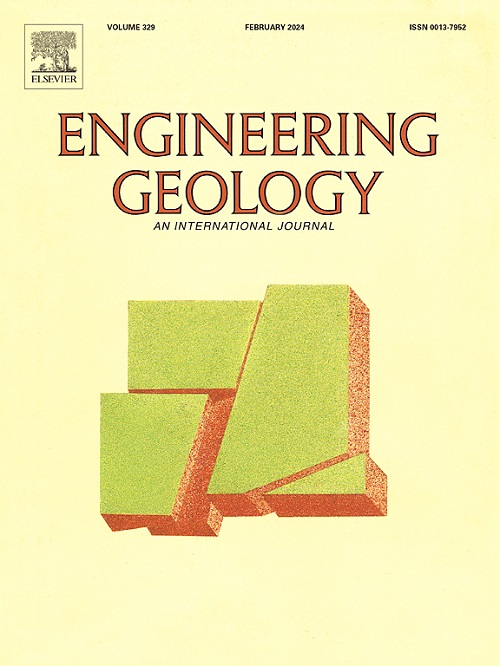Frost heave and water-heat behavior of coarse-grained fill in HSR subgrade considering vapor migration
IF 6.9
1区 工程技术
Q1 ENGINEERING, GEOLOGICAL
引用次数: 0
Abstract
The moisture accumulation and freezing damage of coarse-grained fill (CGF) in high-speed railway (HSR) subgrades have been widely concerned. Based on the newly developed water-vapor-heat-mechanical coupling test apparatus, a series of soil column tests were carried out to investigate the frost heave mechanism of CGF. The results indicate that the liquid water in CGF is discontinuous and difficult to migrate to the freezing front. The primary mechanism of moisture accumulation and frost heave in CGF is vapor migration and phase transition. With increasing freeze-thaw cycles, both vapor migration and frost heave reduce. The thaw settlement of the CGF is less than the frost heave, so there is a net upward deformation in each cycle. Furthermore, the fine particle content has a prominent effect on the heat transfer and frost heave of the CGF compared to the fine particle type. Even under the condition of vapor replenishment, controlling the content of fine particles is still an important way to inhibit frost heave. Moreover, after reducing the maximum particle size of CGF, the frost heave of the sample increases. Nuclear magnetic resonance (NMR) test results show that CGF is dominated by large pores, and the freeze-thaw cycle further promote the development of large pores, providing a good channel for the migration of vapor. In conclusion, the frost heave development caused by vapor migration is slow and continuous, posing a non-negligible risk to HSR subgrades during long-term service.
求助全文
约1分钟内获得全文
求助全文
来源期刊

Engineering Geology
地学-地球科学综合
CiteScore
13.70
自引率
12.20%
发文量
327
审稿时长
5.6 months
期刊介绍:
Engineering Geology, an international interdisciplinary journal, serves as a bridge between earth sciences and engineering, focusing on geological and geotechnical engineering. It welcomes studies with relevance to engineering, environmental concerns, and safety, catering to engineering geologists with backgrounds in geology or civil/mining engineering. Topics include applied geomorphology, structural geology, geophysics, geochemistry, environmental geology, hydrogeology, land use planning, natural hazards, remote sensing, soil and rock mechanics, and applied geotechnical engineering. The journal provides a platform for research at the intersection of geology and engineering disciplines.
 求助内容:
求助内容: 应助结果提醒方式:
应助结果提醒方式:


